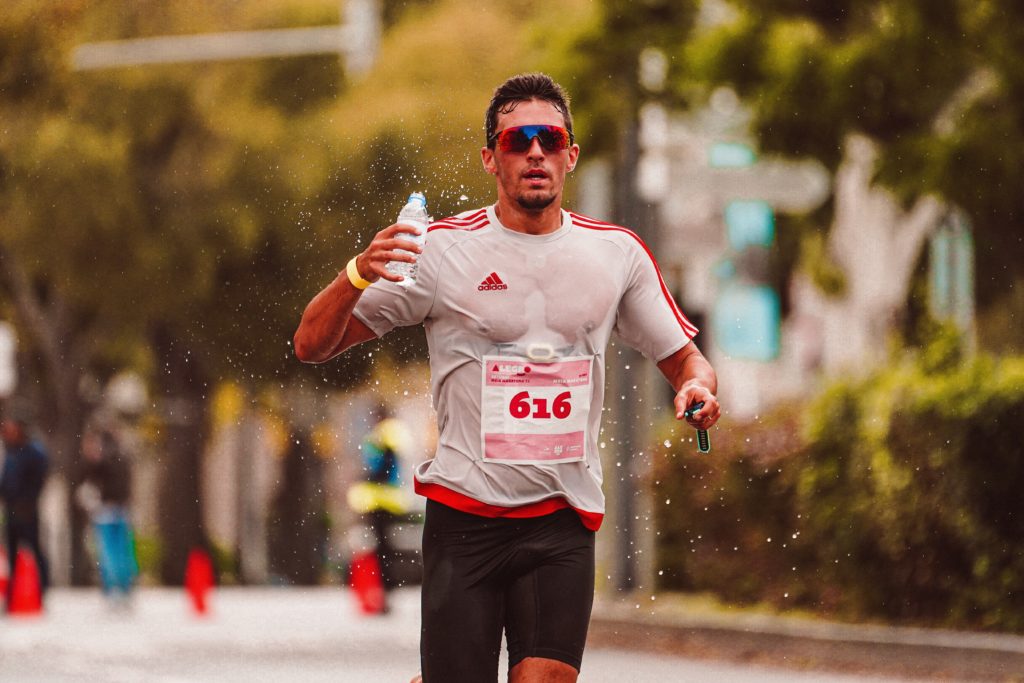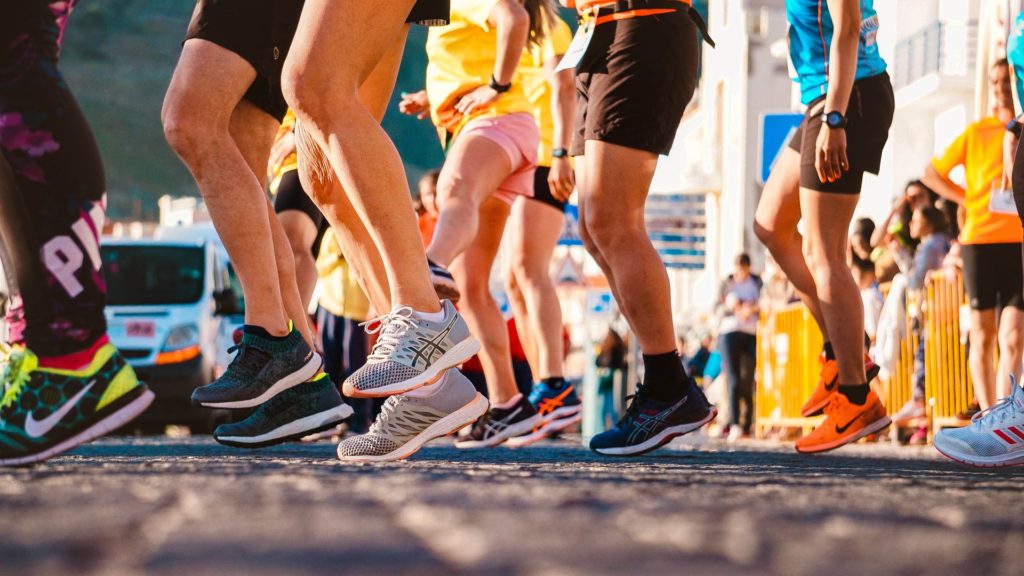by Teri Lavelle
July 31, 2022
I always have trouble at the start of marathon training season. In June, there are many days while running on the IPP when it feels as though I am swimming through Jell-O. Now that it’s almost August, it feels easier, right? Well, my friend, the weather’s not the only component that’s changed: your body’s changed too. It’s adapted to the heat. How did it do that?
To understand adapting to the heat, I did some research. According to studies described in Richard Lovett’s 2022 Runner’s World article, energy created by your muscle exertion will manifest as body heat. This is great at 35°F—you warm-up, and maybe remove your hat to be comfortable.
Summer heat is a different story. Your blood is the fuel for your leg-motors (your muscles); it delivers oxygen to keep them going. Running legs require a lot of blood for exertion—creating body heat. Lovett explains that your core, especially while running in hot weather, heats-up rapidly. Your body then attempts to cool itself down by diverting a large portion of its blood to the skin. This is helpful for your internal organs. It’s not so great for your glutes, quads, hamstrings, and calves—you know, running muscles. Now your legs are not getting the blood they were getting before your body’s big cool-down attempt. As Lovett says, “So even when you’re barely sweating, your muscles are getting less oxygen and therefore are less efficient.” This lack of oxygen will make you feel tired while you are running.
When your hot blood reaches your skin, your body excretes fluid from the blood out of the skin’s pores—this is sweating. It’s your body attempting to rid itself of its excess heat through evaporation. Unfortunately, as Lovett points out, in hot weather you may sweat profusely, lowering your blood volume even more. This means that even less blood can get to your muscles.
Sounds horrendous and hopeless, right? Hold-on. Have you noticed that it has become easier to run these past couple of weeks? Hint: It’s not in your head. It’s in your body.
Training in heat increases your blood volume, Lovett says. This increase in blood will provide more blood for your muscles and skin to share. The ratio of blood going to the muscles versus skin for cooling stays the same after the blood increase. However, the amount of blood feeding the muscles is the same as in cooler weather.
Increased blood volume makes fluid loss through sweating less problematic too. There’s more fluid, hence, less dehydration. Lovett’s article also states that heat training adapts your body to heat by sweating earlier in your run–as it “anticipates” the heating up of your core.
One caveat: Lovett mentions in the article that he spoke to a heat research expert who worked with soldiers in Iraq. She claimed that adapting to heat is quite doable for most people. The expert told Lovett that it was important for newbies to take it easy in the heat until their body’s adapted to it. It is a process that takes on average 10-14 days.
You still sweat a lot in summer, and Lovett suggests you should focus on keeping hydrated. He advises training to drink more and regularly while you run and race. Don’t forget, Lovett reminds us, that your blood chemistry needs to stay balanced by maintaining the right levels of electrolytes, salt, and calcium. We are all lucky, GER provides its members Gatorade, and this should keep everything running efficiently for us during training season. There is also GU and other gel packs with similar ingredients to Gatorade that help a runner stay in the healthy zone.
Let’s raise our cups (filled with light blue Gatorade) and toast ourselves for our audacious ambition and amazing anatomical adaptability!
Good Running.


